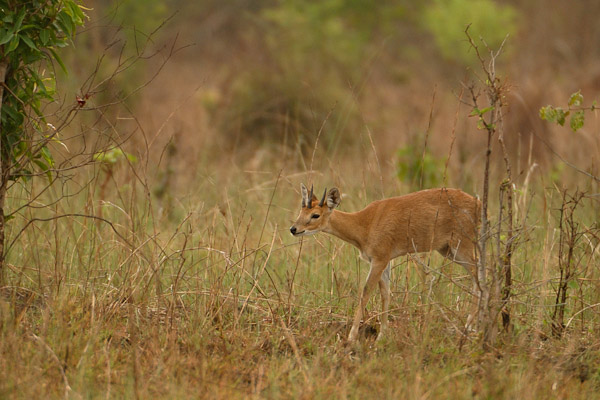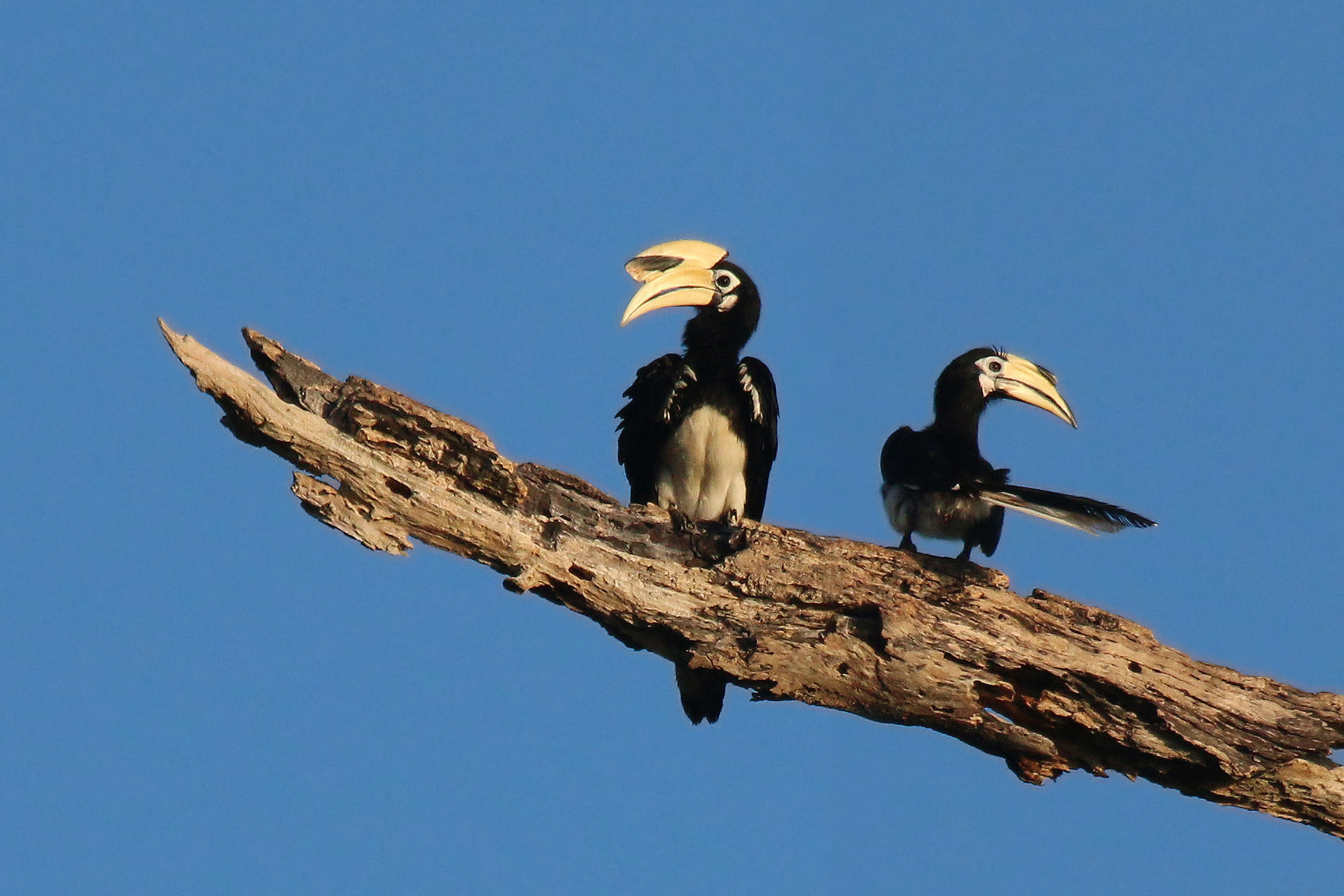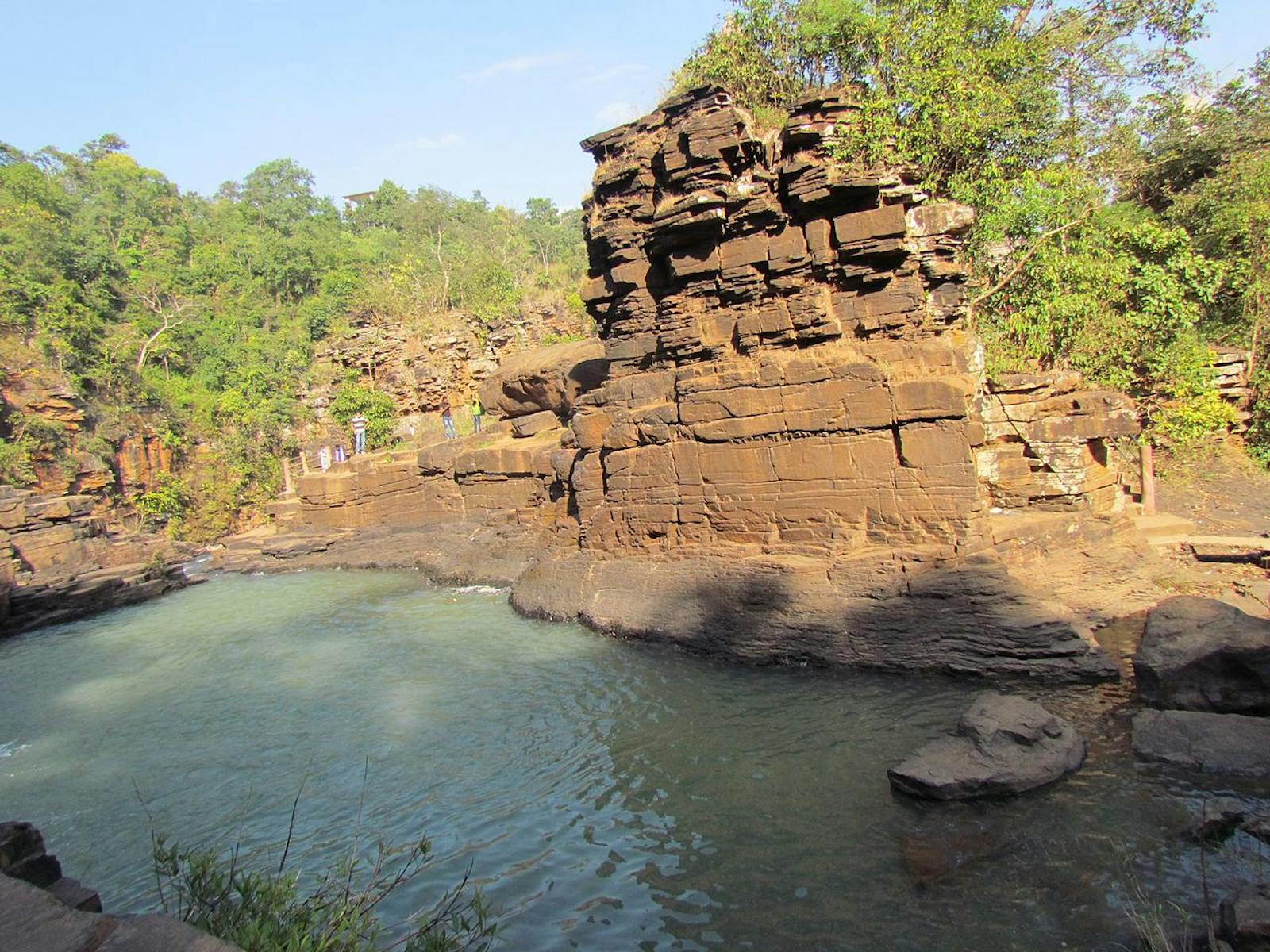North Deccan Dry Deciduous Forests
The ecoregion’s land area is provided in units of 1,000 hectares. The protection goal is the Global Safety Net (GSN1) area for the given ecoregion. The protection level indicates the percentage of the GSN goal that is currently protected on a scale of 0-10.
Bioregion: Northern Deccan & Odisha Tropical Forests (IM7)
Realm: Indomalaya
Ecoregion Size (1000 ha):
5,845
Ecoregion ID:
297
Conservation Target:
3%
Protection Level:
9
States: India
The North Deccan Dry Deciduous Forests ecoregion is neither exceptionally rich in species nor endemism, but is an important link in India’s tiger conservation program. The ecoregion represents a narrow band of dry forests sitting in the rain shadow cast by the Eastern Ghats Mountain Range, and is completely surrounded by moist deciduous forests, represented by the Eastern Highlands Moist Deciduous Forests ecoregion.
As with the other ecoregions in the Deccan Plateau, this ecoregion’s paleogeologic origin dates back to Gondwanaland, when the southern supercontinent broke apart more than 150 million years ago. The plate with the Deccan Plateau drifted northward to its current position where it now forms the Indian subcontinent.
This ecoregion extends across three Indian states of Bihar, Orissa, and Madhya Pradesh, and represents the northern extent of dry deciduous forests in India. Over the centuries, most forests have been cleared or degraded to scrubby habitat by people, livestock, and fire. But the forest types and the species associations have been surmised by botanists as being composed of assemblages dominated by Shorea, Buchanania, Cleistanthus, and Croton, all of them trees that can grow in arid environments. In some areas, the original Sal, or Shorea robusta, has been replaced by another drought-tolerant high-value timber species, teak, Tectona grandis. Patches of cane, Dendrocalamus strictus, grow in small, isolated moister areas.

The flagship species of the North Deccan Dry Deciduous Forests ecoregion is the four-horned antelope. Image credit: Creative Commons
About 70 species of mammals are known from this ecoregion, including several threatened species such as the tiger, wild dog, sloth bear, and the four-horned antelope or chousingha, which means ‘four horns’ in Hindi language. Standing at about 60 cm tall at the shoulder, this is one of the smallest antelopes known. A unique characteristic of this animal is the possession of two sets of horns, with one pair behind the ears, and the other on the forehead. This unusual number of horns have unfortunately made them a target of trophy hunters. Chousingha are usually solitary, but can form small groups of 3 to 5 animals with loose social bonds. They live in dry forests with a heavy undergrowth or grass cover, a habitat that is highly threatened by agricultural expansion. Since these shy animals avoid areas with human activity, the populations are declining and have become highly fragmented.
Over 260 bird species have been recorded from the ecoregion. These include two species of hornbills: the Indian grey hornbill and the much larger oriental pied-hornbill. Since hornbills require tall, mature trees for nesting and fruit trees for food, these large birds can be used as focal and flagship species for forest conservation.

Oriental pied-hornbill. Image credit: Creative Commons
About 90% of the ecoregion’s natural habitat has now been cleared or degraded. The current protected areas cover just about 1,600 km2 in small reserves. In the meantime, land clearing and degradation remain the primary threat to the remaining habitat. Fires are set to create grazing lands for livestock, and forest resources are collected at unsustainable levels, especially by the tribal communities.
Thus, the priority conservation actions in this ecoregion are to: 1) secure the existing protected areas from encroachment; 2) secure forests and slightly degraded woodlands that provide connectivity or are adjacent to the existing reserves as additional protected habitat; and 3) work with local communities to reduce forest degradation and desertification.
Citations
1. Wikramanayake, E, E. Dinerstein, et al. 2002. Terrestrial Ecoregions of the Indo-Pacific: A Conservation Assessment. Island Press.
2. Sharma, K., Rahmani, A.R. and Singh Chundawat, R., 2009. Natural History Observations of the four-horned antelope Tetracerus quadricornis. Journal of the Bombay Natural History Society, 106(1), p.72.
3. Devi, U. and Behera, N., 2003. Assessment of plant diversity in response to forest degradation in a tropical dry deciduous forest of Eastern Ghats in Orissa. Journal of Tropical Forest Science, pp.147-163.



